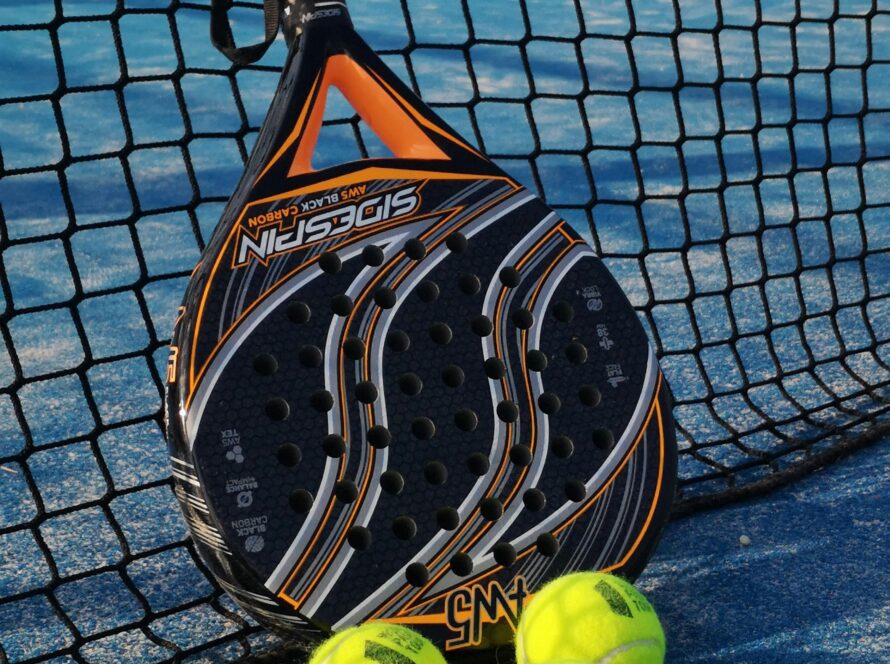Mastering ideal court positioning is key to enhancing your padel game. Begin by reading your opponent’s shot placement, swiftly adjusting your position based on shot direction.
Identify weaknesses in the backcourt and coordinate with your partner to maintain balanced coverage. Master the return position, using deep lobs to pressure opponents.
Effective net play strategies, anticipating shot directions, and creating space on the court are also essential. As you refine your positioning, you’ll uncover even more strategic advantages – and reveal the secrets to outmaneuvering your opponents.
Reading the Opponent’s Shot Placement
As you face off against your opponent, pay attention to their racket angle and body positioning, as these subtle cues can reveal the direction of their next shot. By reading these signs, you’ll gain an essential edge in anticipating their next move.
Be prepared to adjust your court positioning swiftly, as the opponent’s shot direction can change in an instant.
To take your anticipation to the next level, analyse patterns in your opponent’s shot placement. Do they tend to hit forehand winners down the line? Or do they favour cross-court backhands? By recognising these patterns, you’ll be able to predict their next shot and position yourself accordingly.
Remember to stay balanced and light on your feet, ready to move in any direction to cover the court effectively.
Identifying Weaknesses in the Backcourt
Recognising patterns in your opponent’s shot placement, you can now focus on identifying weaknesses in their backcourt play, where strategic exploitation can give you a significant advantage. Analyse your opponent’s shot patterns to identify areas where they struggle to return shots. This could be due to a lack of mobility, poor footwork, or inconsistent shot selection.
| Weaknesses to Exploit | Strategic Response |
|---|---|
| Inconsistent deep shots | Use deep lobs to push them back and create openings |
| Poor footwork on backhand | Target their backhand with angled shots |
| Struggling with high-bouncing shots | Use topspin shots to test their reaction time |
| Vulnerability to powerful shots | Use pace to push them back and create opportunities |
| Inability to handle low-bouncing shots | Use slice shots to keep the ball low and out of reach |
Coordinating With Your Partner
Effective communication and synchronisation with your partner are essential in maximising court coverage and outmanoeuvring your opponents. As you work together, remember that your partner should mirror your positioning on the court to maintain a balanced coverage of the playing area.
Adjust your positions based on the tactics being used during the game to effectively work together. For instance, when defending against lobs, maintain a distance from the net to cover more ground with your partner.
Smooth shifts between defensive and attacking positions are also vital, so be sure to adapt to the flow of the game and your partner’s movements.
Most importantly, support each other in covering the court to ensure all areas are defended and opportunities are maximised. By working in tandem, you’ll be able to outmanoeuvre your opponents and take your game to the next level.
Mastering the Return Position
Get ready to take control of the return by positioning yourself behind the service line, where you’ll have a solid defensive stance to respond to your opponent’s serve. As you prepare, bounce on your toes to stay light and ready to react to the serve. This will allow you to quickly respond to the opponent’s shot and take the initiative in the rally.
Maintain your position if the opponent approaches the net, as this will limit their options and force them to hit a difficult shot. Defend from the back court to control the rally and create opportunities to shift to attack. If you hit a deep lob, use this as a chance to put pressure on the opponents and take the upper hand.
Effective Net Play Strategies
As you step up to the net, position yourself at the third post to react quickly to short balls and create attacking opportunities. This strategic positioning allows you to cover short volleys and shift seamlessly between defence and attack.
Remember, effective net play is all about finding the sweet spot between reacting to your opponent’s shots and taking the initiative to attack.
As you move forward, avoid standing too close to the net, as this can limit your reaction time and mobility. Instead, use the posts as reference points to maintain the correct distance and stay agile.
This will enable you to quickly respond to short balls and exploit any weaknesses in your opponent’s game.
Adapting to Opponent’s Strengths
By analysing your opponent’s strengths, you can anticipate their tactics and adjust your court positioning to counteract their advantages. This is vital in padel, as understanding your opponent’s strengths allows you to neutralise their threats and gain an upper hand.
To adapt to your opponent’s strengths, keep the following strategies in mind:
- Analyse their strengths: Identify your opponent’s powerful smashes or precise lobs to anticipate their tactics.
- Adjust your positioning: Counteract their strengths by positioning yourself strategically on the court.
- Defend against preferred shots: Focus on defending against your opponent’s favourite shots to limit their advantage.
- Stay aware of their positioning: Be mindful of your opponent’s positioning to react quickly and neutralise their strengths.
- Work with your partner: Collaborate with your partner to cover each other’s weaknesses and exploit opportunities to outmanoeuvre your opponent.
Creating Space on the Court
Creating Space on the Court
You’ve adapted to your opponent’s strengths, now it’s time to focus on creating space on the court, which starts with maintaining a strategic distance from your partner. Aim for a distance of about 3-5 metres to cover more of the court effectively. Anticipate your partner’s movements to avoid crowding the same areas and leaving openings for opponents.
To optimise your positioning, consider the following strategies:
| Situation | Positioning Adjustments |
|---|---|
| Aggressive play | Move closer to the net |
| Defensive strategies | Stay back and cover the baseline |
| Opponent’s weakness | Shift to exploit their vulnerabilities |
| Partner’s movement | Adjust to maintain the best distance |
| Uncertainty | Communicate with your partner to adapt |
Reacting to Opponent’s Moves
To stay one step ahead of your opponents, learn to read their body language and court positioning to anticipate their next move. This allows you to react quickly and adjust your position to cover the most vulnerable areas of the court.
As you observe your opponent’s movements, be prepared to move forward or backward based on the trajectory of the ball and their body language.
Mastering the art of reacting to your opponent’s moves involves:
- Anticipating your opponent’s shots by reading their body language and court positioning
- Adjusting your position quickly to cover vulnerable areas of the court
- Staying prepared to move forward or backward based on the ball’s trajectory and your opponent’s movements
- Maintaining a balanced stance to respond to sudden changes in your opponent’s strategy
- Using your court positioning to force errors from your opponent and create opportunities for offensive plays
Maximizing Court Coverage
As you take to the court, strategically position yourself to dominate the most advantageous areas, making sure you’re always one step ahead of your opponents.
To maximise court coverage, you need to utilise the entire court space efficiently. Adjust your position based on the game situation, taking into account the strengths and weaknesses of both you and your partner.
Coordinate with your partner to make certain that both of you’re covering the court effectively, leaving no gaps for your opponents to exploit.
Continuously assess and adapt your court positioning to maintain control and maximise your chances of winning points.
Don’t just react to your opponents’ moves; anticipate their shots and adjust your positioning to defend against potential threats. By doing so, you’ll be able to respond quickly to any situation, turning defence into offence and catching your opponents off guard.
Anticipating Shot Directions
By anticipating shot directions, you can take your court positioning to the next level, gaining a split-second advantage over your opponents. To do this, observe your opponent’s body positioning and racket angle to anticipate the direction of their shot. Look for cues such as shoulder rotation and racket preparation to predict the direction of the shot.
To anticipate shot directions, observe your opponent’s body positioning to anticipate the direction of their shot. Look for cues such as shoulder rotation and racket preparation to predict the direction of the shot.
Adjust your positioning on the court based on the anticipated shot direction. Stay ready to react quickly to changes in shot direction during rallies. Develop the ability to anticipate shots through experience and practice on the court.
Conclusion
You’ve got the skills, now own the court! By mastering these 10 tips, you’ll dominate padel like a pro.
Remember to read your opponent’s shot placement, identify backcourt weaknesses, and coordinate with your partner.
Own the return position, outmanoeuvre at the net, and create space to react to their moves.
Anticipate shot directions and maximise court coverage.
With these strategies, you’ll be the one calling the shots and taking home the win.




